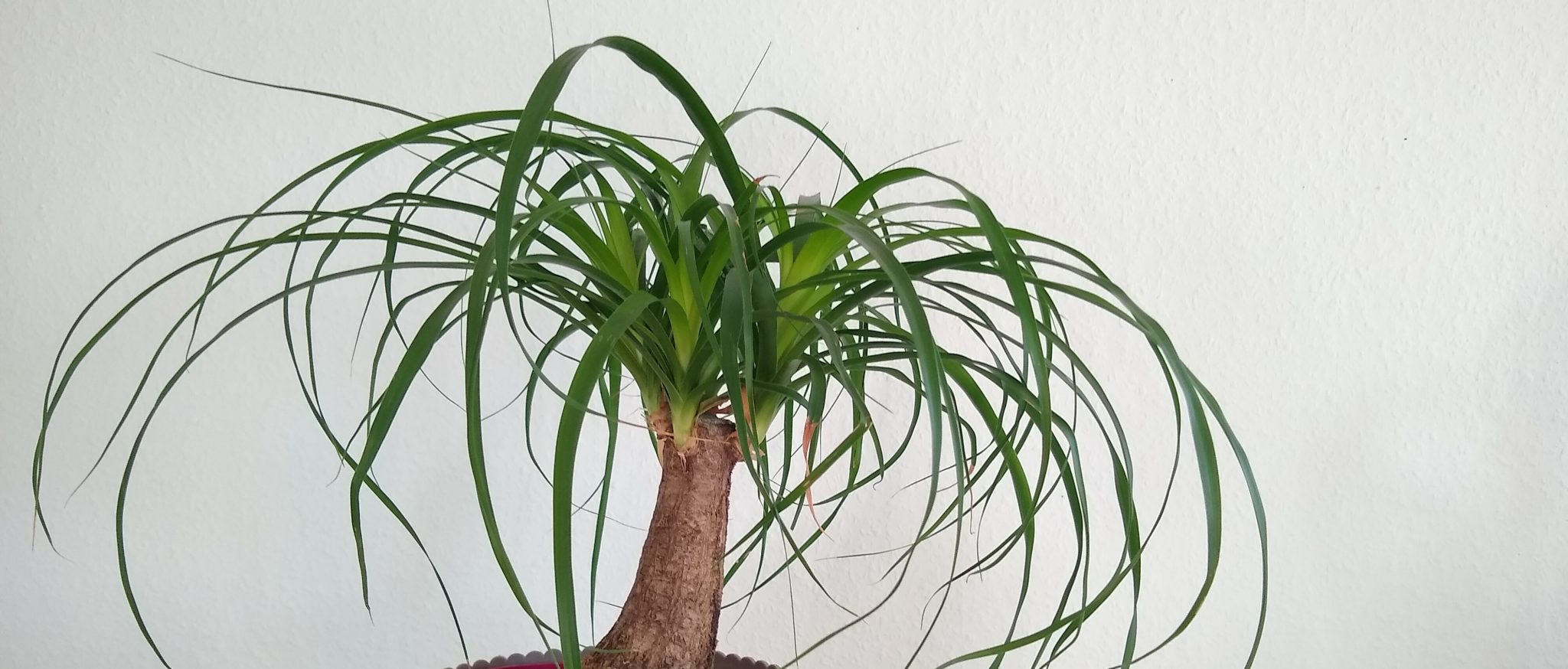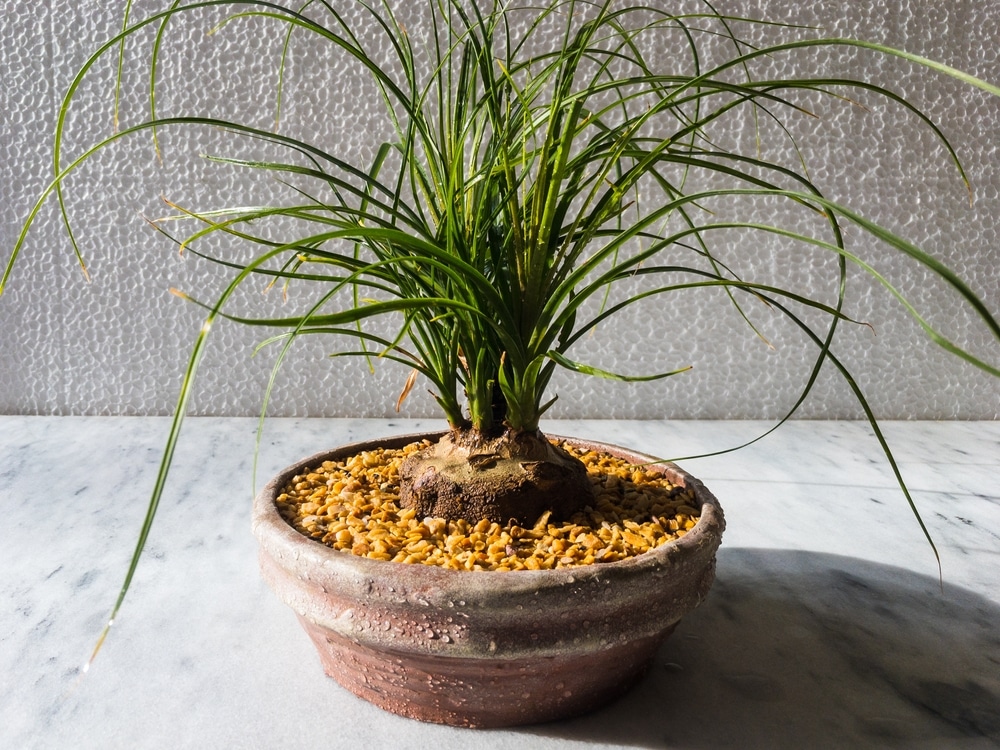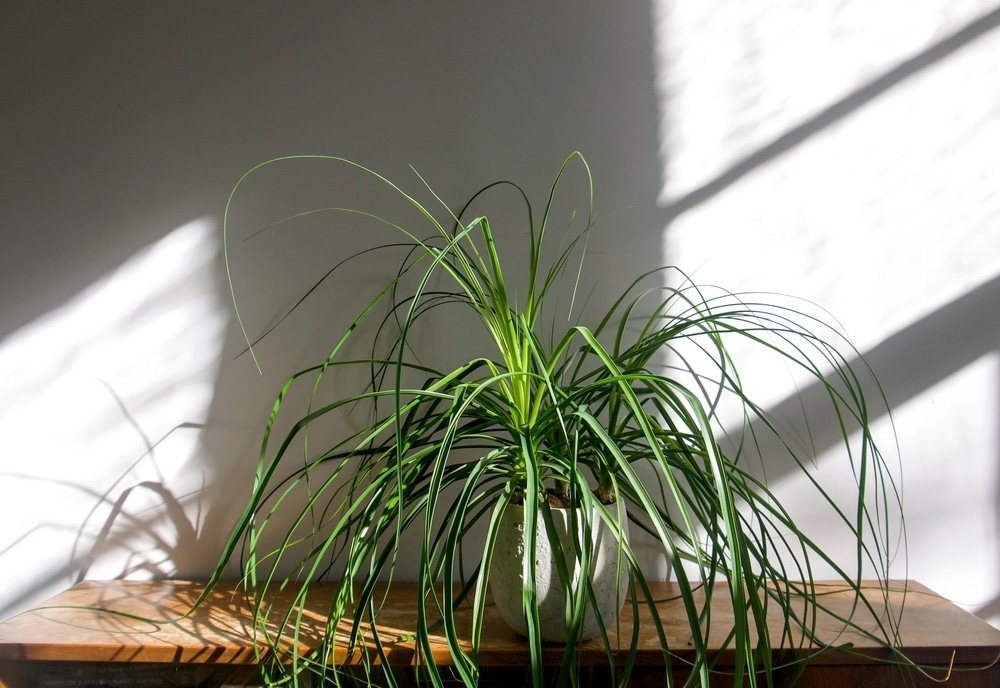As with every plant, there is a margin for error when caring for a ponytail palm. One easy mistake to make is overwatering it. From its name to the looks, the ponytail palm may confuse some in regard to its watering needs, as it’s actually a succulent. How do you tell if you’ve overwatered your succulent, though? What do you do next?
Signs of Overwatered Ponytail Palm
Overwatering is a widespread issue with ponytail palms because they disguise themselves as little palm trees. When you overwater your ponytail palm, its leaves will droop and turn from green to brown. Waterlogging a ponytail palm can kill it, just like any other plant.
Furthermore, this succulent’s leaves can fall off when both overwatered and underwatered.
One huge sign to look out for is a soft trunk. When the trunk gets soft, that is the plant showing you that you have overwatered it.
You can look for root rot, too. Root rot is a result of a fungus that thrives on overwatered plants. If your plant has root rot, the roots will be mushy. If it gets particularly bad, the rot can spread up the plant. At this point, root rot advances to crown rot which causes the leaves to rot, too.
What To Do When You Overwater Your Ponytail Palm
What you need to do when you overwater your ponytail palm largely depends on the degree of damage. Provided the damage hasn’t become irreparable, you need to let the plant dry out if the leaves are falling off. There isn’t a lot more you can do about that, but you can take action with the rest of the overwatering symptoms.
In the early stages of overwatering, you can probably just let the soil dry and water it on a new routine. However, the worse it gets, the more likely you are to have to totally repot it in fresh, dry soil. When you do this, you may have to let the root ball dry to ensure the plant can recover.
With root rot, you need to cut away any rotting material. Use sterile pruning shears to ensure your plant doesn’t catch any disease or infection from the wounds. Make sure you use a potting mixture meant for succulents to ensure the soil drains properly.
How Much Water Should a Ponytail Palm Get?
Since the ponytail palm is succulent, you should let the soil dry in between waterings. In the winter, you can water your ponytail palm significantly less. In the summer, this may be every few weeks to a month, but in the winter, you may be able to get away with watering it as little as once every few months.
You should set up a regular watering schedule based on how long your ponytail palm takes to absorb all the water you give it. Each plant will be different, so pay attention and consider getting a moisture meter to be sure of when to water your plants.
In Conclusion
Having a better understanding of overwatering a ponytail palm can help prevent it from happening as well as hasten your plant’s recovery. Depending on the severity of the situation, it may bounce back quickly, or it may take some patience. Either way, you know what to do next time something like this happens.


